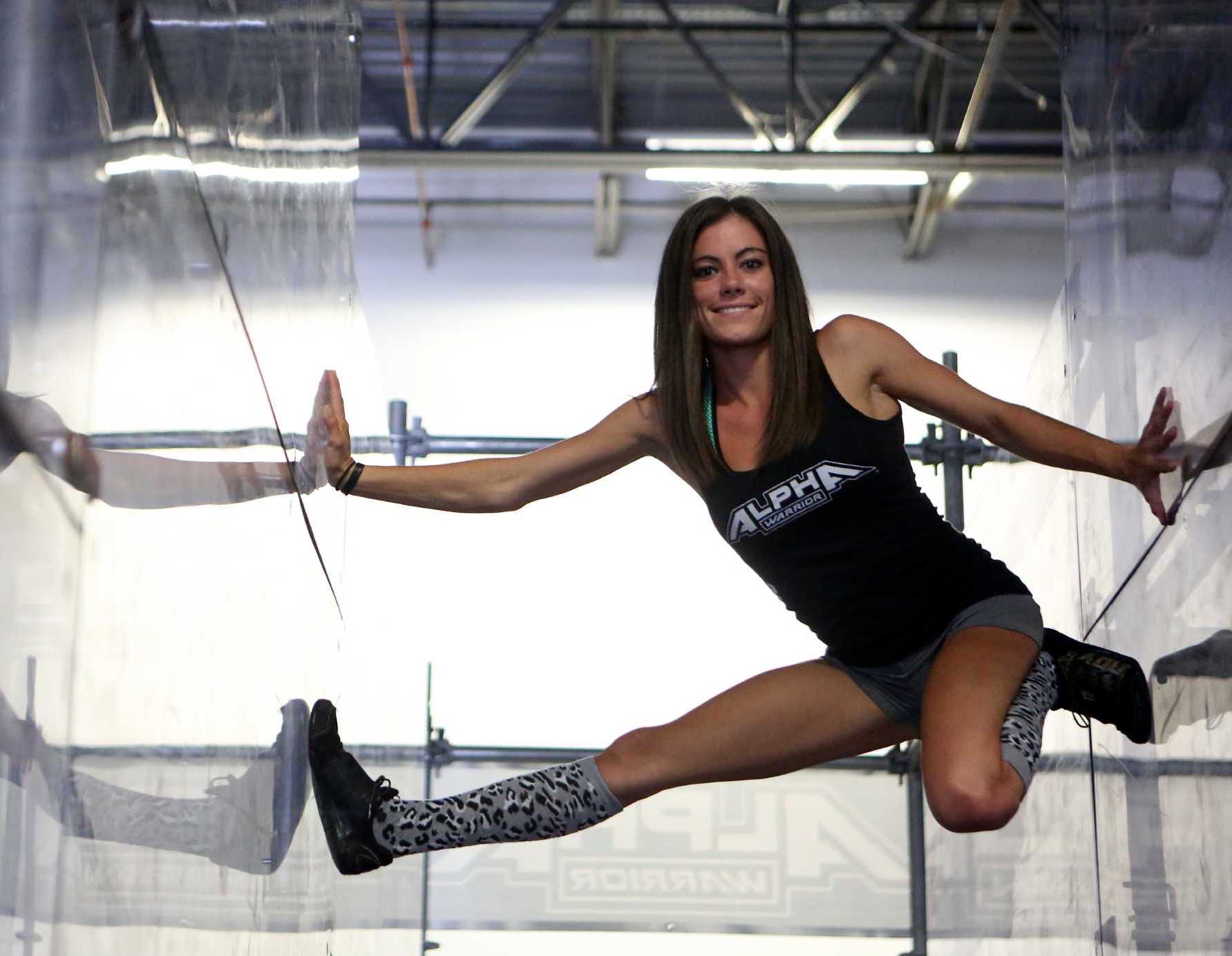When Kacy Catanzaro made it up the warped wall in 2014, she became the first woman ever to complete an “American Ninja Warrior” qualifying course. Later that year, she also became the first woman to finish a city finals course and qualify for the National Finals in Las Vegas.
Her success became one of the most important moments in the history of the show, setting a precedent for female competitors from that point on. To put Catanzaro’s popularity into perspective, compare her 2014 warped wall video to the video of Isaac Caldiero, who became the first person to ever complete the full course. Caldiero’s seven-minute clip currently has 3.2 million views on YouTube; Catanzaro’s has over 16 million.
Now, three seasons later, Catanzaro’s legacy has inspired a whole new group of women to train and compete as Ninja Warriors. Perhaps the most notable of these competitors is stuntwoman Jessie Graff, who became the first woman to complete stage one of the Las Vegas finals course when she competed in 2016. In the “Team USA vs. The World” competition earlier this summer, she also became the first woman to complete stage two, though she did so outside of the regular competition season. Graff and Catanzaro are two of the most recognizable female faces of “American Ninja Warrior,” but they are not the only women to have been successful.
In fact, a whole slew of female competitors have been climbing the Ninja Warrior ranks since Catanzaro’s legendary success three years ago. In 2016, eighteen women competed in stage one of the Vegas finals, though only three advanced via automatic qualifying spots. The other fifteen were given wildcard passes to the finals competition.
When Caldiero made it to the top of Mt. Midoriyama—the end of the national finals course—at the conclusion of last season, he became the show’s first finisher. His performance, however, was out-hyped by the success of female competitors in the early stages. Episodes featuring these women brought in notably higher ratings than male-featured episodes, leading the show’s producers to apply a series of changes to the qualifying process for season nine in order to shine the lights on a higher number of female competitors.
This season, the top five women from each city qualifier advanced automatically to the city finals course. The top two women from each city finals course advanced to stage one of the National Finals in Las Vegas. No wildcards were given.
These changes were implemented with ratings in mind; they allowed producers to ensure that women would be running in each city. In theory, this is really good for the promotion of female athletes on the show, but in practice it becomes a little more complicated. Giving women their own qualifying category meant viewers were constantly reminded that the women couldn’t advance on their own; they needed their own rules in order to make it to later stages. As the announcers reeled off recaps and qualifying lists at the end of each commercial break, they would reveal the top thirty (for city qualifiers) or fifteen (for city finals) finishers, and then tack the top women in the field to the end of the list. The separate, smaller category felt like an afterthought designed to chase ratings, and essentially that’s all it was.
What’s perhaps even more important is that it was largely unnecessary. Nine women qualified for city finals courses based on their times alone, not compared to their fellow female competitors, but in the overall standings. Of these nine, two qualified to stage one of the Vegas course unassisted and one advanced all the way to stage two; she will run on the season finale tonight (Monday, September 18, 2017). While this may seem like a meager number, remember that past seasons also included a substantial number of wildcard spots, some of which could have been given to women who, with the new rules, filled the female qualifying positions. This would have still allowed producers to promote and feature female successes without providing a cop-out category.
Athletics are naturally gendered—which, to a large extent, is a good thing. Men and women are physiologically very different, and have no reason to be competing head-to-head in traditional sports settings. “American Ninja Warrior,” however, has been a refreshing exception. While a higher quantity of men are competing on the show, the women have become highly successful as well, completing the exact same obstacles as the men. Because of the combination of strength, agility and technique needed for the courses, the competition is able to remain genderless and open to all competitors in equal measure, which is one of the draws of the show. It is also one of the aspects minimized by the establishment of this season’s qualifying rules.
Regardless of the rules, or of the paths these female competitors are taking to compete in the National Finals in Las Vegas, the collection of women who advance as part of the top fifteen city finals finishers is still an elite group. It currently consists of Catanzaro, who was the first to qualify in season six, and Graff, who qualified in seasons seven, eight and nine. Joining them are Meagan Martin and Jesse Labreck, who both qualified out of their respective city finals courses in season eight (Labreck also qualified this season, though she was unable to advance past stage one). These four women have set the bar high for their fellow competitors, showing that “American Ninja Warrior” can, in fact, be a place where men and women can successfully compete against one another.
Tonight’s show will feature rising ninja star Allyssa Beird, the schoolteacher who hopes to make history as the first female competitor to complete stage two in regular competition (remember, Graff completed it earlier this year in the team competition, but not in the open course). Beird was unable to complete her city finals course, relying instead on a female qualifying position. In her case, the rule wouldn’t have made much difference, as she undoubtedly would have received a wildcard in past seasons, but her success in stage one guaranteed her the chance to take on the second portion in tonight’s competition. Be sure to catch her stage two run; she just might be making ninja history.

















